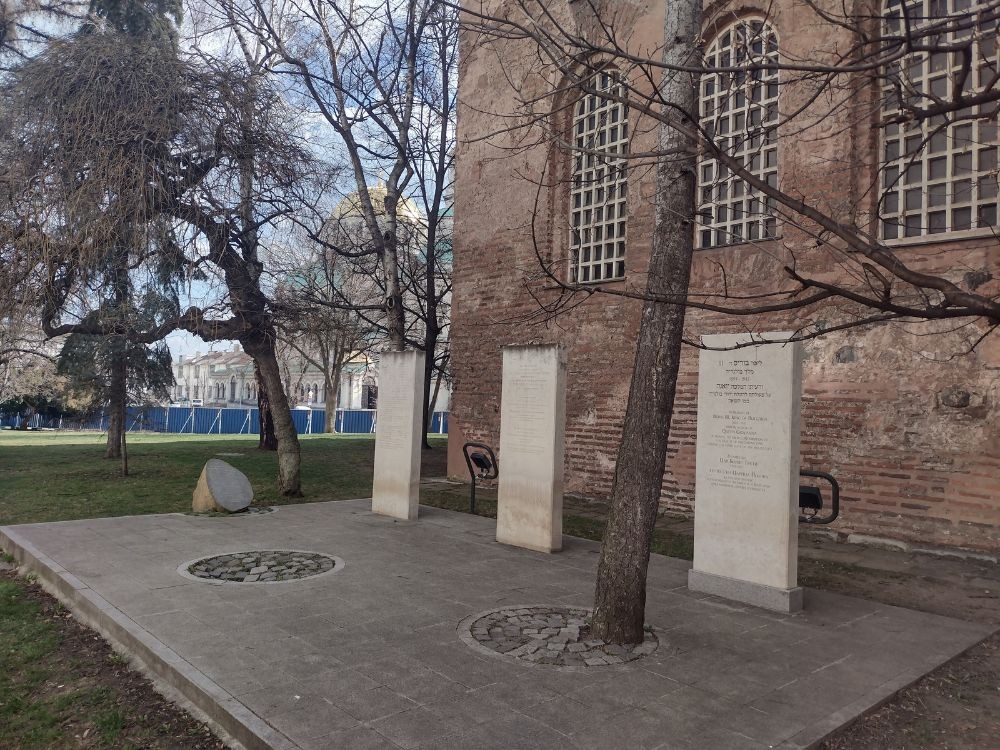Fortunately, in Sofia you will not find museums or monuments to the Holocaust, as there are in many European capitals, because fortunately, Bulgaria did save its Jews from deportation to Nazi concentration camps during World War II. In this capital there are no places of remembrance like in Berlin - the memorial by Peter Eisenmanns near the Brandenburg Gate or the Jewish Museum - Libeskind-Bau.
Unfortunately, Bulgarian society remains divided in its reading and interpretation of historical documents. Because of ideological assessments, there is still no objective historical account of the events that led to the deportation of the Bulgarian Jews and the role of the people who saved them. This is probably the reason why for the foreseeable future there will be no museum in Sofia dedicated to the rescue of Bulgarian Jews during World War II.
But at least there is no dispute about the date - March 10. In 1943, on March 10, in the office of the Minister of the Interior, Petar Gabrowski, the so-called Kyustendil Campaign for the Rescue of Bulgarian Jews was brought to fruition. The deputy chairman of the 25th National Assembly, Dimitar Peshev, led a delegation of deputies. The men stormed into the minister’s office compelled him to immediately pick up the phone and call off all preparations to deport the Bulgarian Jews. The behind-the-scenes events of the entire operation and the role of the known and unknown participants in it are debated to this day, but the date of the rescue is unanimously noted.
Where in Sofia can one pay tribute to the work of the rescuers?
The three memorial plaques on Moskovska Street, near St. Sofia Church, are the oldest in Sofia. They are copies of the memorial plaques placed in the Bulgarian Forest near Jerusalem in 1999 at the insistence of Bulgarian Jews from Los Angeles. The plaques were removed in 2000 by the NGO Israel National Fund. This was done at the request of the surviving descendants of 11,343 Thracian and Macedonian Jews deported to Israel. The plaques are dedicated to Tsar Boris III and Tzaritsa Ioanna, to the Bulgarian Metropolitan Stefan and to the Deputy Speaker of the 25th Parliament Dimitar Peshev, as well as to the act of rescue itself. They are inscribed in three languages - Hebrew, English and Bulgarian. Today there is an explanatory inscription on the side of the plaques in the capital about their restoration.

In 2016, a memorial was unveiled in the garden between the Parliament, the National Academy of Arts and Sofia University. According to its authors Momchil Tsvetkov and Georgi Tsvetkov, the composition symbolizes an embrace of a male and female figure with a common beginning. Their bodies outline a heart which houses the Star of David. In 2018, a replica of the memorial was installed in Tel Aviv's beautiful waterfront area. The Bulgarian-English bilingual inscription near the memorial reads, "We recall this outstanding rescue and remember more than 11,000 Jews from both Northern Greece and parts of ex-Yugoslavia, under Bulgarian administration, who were deported and murdered in the Treblinka death camp."

At the entrance to the garden in front of St. George's Church, on the occasion of the 70th anniversary of the rescue of the Bulgarian Jews, a monument to the former Deputy Speaker of Parliament and Minister of Justice Dimitar Peshev was placed - a replica of the bust of the Peshev erected in 2000 in the Council of Europe building in Strasbourg by the sculptor Ivan Minekov. This garden was one of the few places visited by Peshev in Sofia after he was released from prison in 1946 to barely survive without the right to work and earn a living. He used to live not far away, on 47 Neofit Rilski Str, in his sister's home, below his own apartment, which was confiscated by the Communist authorities. In front of the so-called "Kyustendil appartments" in the capital, where the rescuer died in 1973, there is a memorial plaque. You will rarely see flowers placed here.
What the four sites have in common is that they bring us back to the memory of the rescue of the Bulgarian Jews, which was not just a one-time act. They remind us also of the fate of the rescuers, of all those events and people that could never be forgotten. After all, that is what monuments are for.
Photography: Ivo Ivanov
English version: Elizabeth Radkova
June 11, 2007 - US President George W. Bush Jr. visits Sofia. According to protocol, the press conference he held for the media took place among the exhibits of the National Archaeological Museum. The official lunch for the guest was later held at the..
On November 10, 1989, a plenum of the Central Committee of the Bulgarian Communist Party ousted its General Secretary and Chairman of the State Council, Todor Zhivkov. This marked the symbolic beginning of the transition from a one-party system to..
Archaeologists have explored a necropolis in the Kavatsi area near Sozopol. The perimeter in which it is located is part of the history of Apollonia Pontica and is dated to the 4th century BC. "This is a site with interesting burials in which a nuance..
The Museum of the Jewish People in Tel Aviv , Israel, today commemorates the 130th anniversary of the birth of Dimitar Peshev, a righteous man of the..
The Feast of the Epiphany - the entry of the Theotokos into the Temple - is one of the oldest and most revered feasts in the Orthodox world. It was..

+359 2 9336 661
